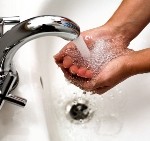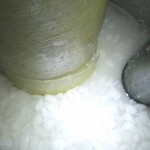Water softening process reduces calcium, magnesium and to some degree, ferrous iron and manganese which is present in hard water. Hard water is full of mineral concentration and that must be removed as it has a very undesirable and harmful effect to the body. There are two types of water softeners, the first one is that one that uses salt while the other one is the saltless water softener.

The saltless water softener is commonly used by individuals who have hypertension and other medical conditions that restricts them from salt or sodium. This is their best choice for water softening process. Aside from this, this particular water softener atttracts environmentally conscious individual. It is no question that considerable amounts of salt dumped in the ecosystem can ultimately damage environmental surroundings. There are some studies that found any particular one single-family household that can deposit 500 pounds of salt into the ground each year.
Saltless water softener is not actually a softener. This system is better known as descalers or water conditioners since they don’t actually take away the dissolved minerals required to soften the water. These saltless systems work by changing the physical properties of minerals. A magnetic strategy is employed to create ionic charges that keep them in a suspended state. This will then prevent the mineral deposits on pipes, faucets, and household appliances designed to use water. However, scales may as well form anywhere water is stagnant. Due to the ionic charge technology, saltless water softeners are also known as magnetic water softeners.
This is more expensive than water softeners that has salt but it is said that it can help you save more money in the long run. Between the two basic types of water softeners, it is really up to the person and his or her current medical condition whether he or she will choose the salt one or the salt free water softener.








